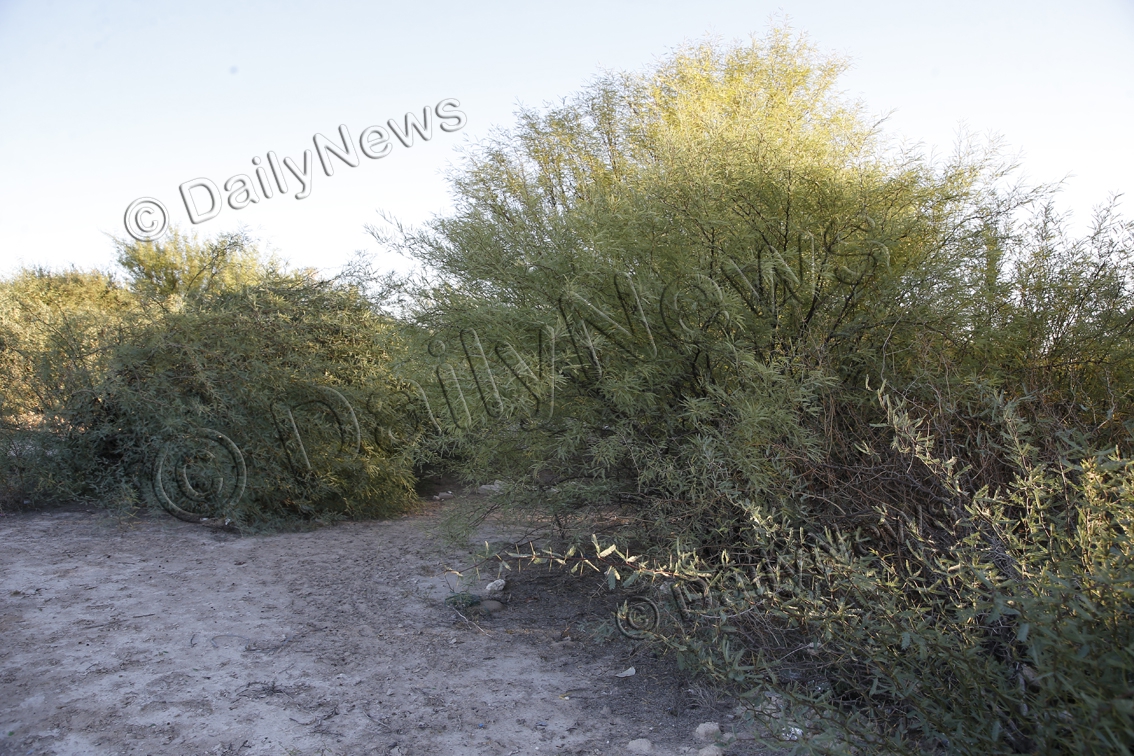Sexanana debate rages on in Bokspits
15 Apr 2024
Bokspits, a village in the middle of the Kgalagadi Desert where tradition and modernity coexist.
It is here that the infamous Prosopis mesquite plant popularly known as exanana has gained notoriety for its ability to withstand harsh conditions.
Originating from South America, it has found home in and colonised the Kgalagadi, Gantsi and Central districts.
Prosopis has since become a topic of heated discussion among locals, environmentalists, and policymakers alike.
The debate revolves around its perceived benefits and drawbacks, highlighting the complex interplay between human intervention, ecological impact, and sustainable development.
Some locals call it the ‘problem tree’, as the plant’s presence has stirred up a myriad of concerns among residents, ranging from environmental to societal and cultural impacts.
One of the primary grievances cited by residents is the plant’s aggressive growth, which has encroached into farmland and natural habitats, and has displaced indigenous flora.
A livestock farmer, Mr Matthys Kamboer, said in an interview that his field used to flourish with staple crops, but now they were being overrun by this invasive plant.
“The tree is shrubbery, has long thin multi-branches and the leaves are ever green regardless of the season or climate,” Mr Kamboer stated.
“To stay this green, the plant requires a lot of water and since it rapidly delves to sub-surface areas to retrieve the water, it poses a threat to water supplies in the area and therefore should be eradicated,” he explained.
However, not all residents view sexanana as a problem.
Mr Fredrick Titus, a board member of the Bokspits, Rappelspan, Vaalhoek and Struizandam (BORAVAST) Community Resources Management Trust, sees it as an opportunity for economic growth and cultural revival.
Mr Titus suggested the plant be properly managed instead of being totally eliminated.
He indicated the plant’s potential for providing a sustainable source of income through the sale of its extracts and derivatives.
“For instance our trust has a project aimed at developing a management strategy for the plant by producing charcoal and animal fodder from sexanana,” he said.
Mr Titus also highlighted the plant’s medicinal properties, which had been utilised by traditional healers for generations.
“It is believed to have anti-inflammatory effects and is used to alleviate conditions such as stomach pain, indigestion, and even minor infections,” he said.
Meanwhile, forest district coordinator - Kgalagadi District in the Ministry of Environment and Tourism, Mr Tawana Maunganidze said the plant had advantages and disadvantages.
“The Prosopis mesquite or sexanana is said to have been introduced into the BORAVAST area to address issues of desertification and growing sand dunes,” he said.
Mr Maunganidze said however, the plant due to its invasive nature encroached into other parts of the country and caused unanticipated damage.
He said while the tree may possess certain desirable traits, such as resilience and adaptability, its negative impacts could not be be overlooked.
“From ecosystem disruption to water depletion and agricultural challenges, the cons associated with sexanana trees underscore the importance of careful consideration and management of invasive species to mitigate their detrimental effects on the environment and society,” he said.
Mr Maunganidze further stated that the tree was notorious for its insatiable water consumption due to its deep root systems.
“In regions already grappling with water scarcity, the introduction of sexanana trees intensifies the problem, further straining limited resources,” he said.
He also said some people had complained of allergies associated with the tree, but there was no scientific evidence that proved that the plant caused any allergic reactions.
Elaborating on the benefits of the plant, Mr Maunganidze said it was a good source firewood.
“The wood is dense and burns slowly, making it a valuable source of fuel for cooking and heating and it is also used for woodwork as it can be crafted into furniture, fences, and other structures,” he said.
Mr Maunganidze futher said sexanana pods were edible and had been traditionally used by indigenous peoples for food.
“The plant is also a good windbreaker and since wind erosion is a problem in this area, sexanana holds onto dust sand, therefore in that instance it is good for the environment,” he said.
Regarding management strategies that his department had come up with to control the plant, Mr Maunganidze said the action plan named the Prosopis Management Strategy was in place.
“The strategy involve a comprehensive approach to address the challenges posed by invasive Prosopis species while also leveraging potential benefits they may offer,” said Mr Maunganidze.
He said integrated management strategies that combined various control methods tailored to different contexts, which included mechanical methods to manage the plant especially in areas where it is not needed, could be used.
“We also think we should tap into our research and monitoring division to develop biological control methods or get into partnership with tertiary institutions to research more about sexanana and its management strategies,” he said.
Mr Maunganidze said the department was going to do its best to manage the plant, but not going to eliminate it completely as it had advantages and disadvantages.
As debates rage on about its merits and drawbacks, the village stands as a small-scale version of the broader challenge of balancing conservation with development, in the face of changing landscapes. ENDS
Source : BOPA
Author : Taboka Ngwako
Location : BOKSPITS
Event : FEATURE
Date : 15 Apr 2024






